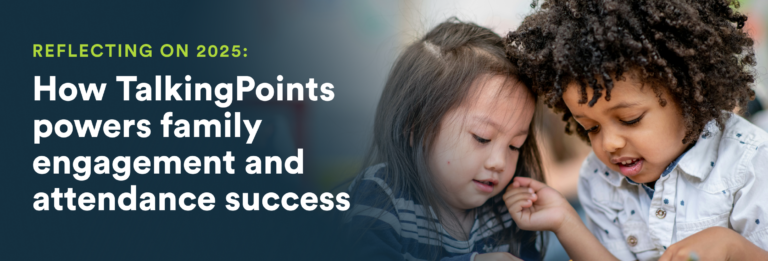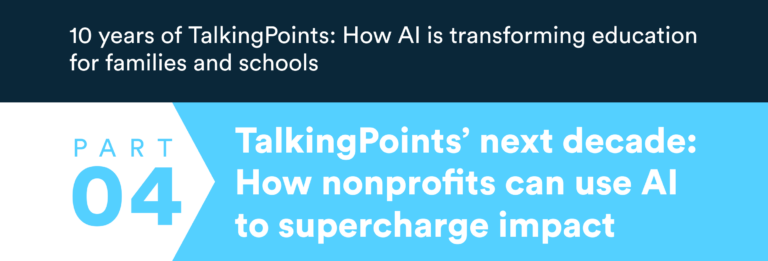Written by Paige DeLozier
It’s a well known fact that the more families are involved in their students’ studies, the better the students perform. But in a time where “equity” is a buzzword in education and students have moved from completely remote classes, to some hybrid form, to going back to school and some sense of normalcy, it’s difficult to suss out what family engagement means and should look like. Here, we dive into what family engagement is, how it can benefit your students, and what equity in family engagement should look like.
What is family engagement?
Family engagement is the process of building a relationship based on mutual trust and understanding between the families and the educators who look after their students. As teachers, it’s important to reach out to students’ families and communicate with them about key matters: classroom updates, student progress, and how family members can be helping at home.
The benefits of family engagement are well-known. Research shows that family engagement is two times as effective in predicting a student’s success than the family’s socioeconomic status. With many students having experienced school from home, the effect of family engagement is even higher post-pandemic. In addition, an engaged family member can have the effect of $1000 spent by the education system in increasing academic achievement. The family at home is the student’s first teacher and continues to be a primary educator throughout their K-12 experience.
Is family engagement inequitable in the current environment?
So family engagement is amazing, but are some students benefiting from it more than others? In a nutshell, the answer is yes. Family engagement is inequitable in the current environment, because the current education system suffers from levels of inequity. Let’s explore some of the reasons why.
Language
25% of students are from immigrant families, where they speak a language other than English at home. Many of these parents or guardians also speak very little English, which prevents them from communicating freely and effectively with their children’s teachers.
Socioeconomic background
Additionally, these families are more likely to live in underserved communities, where family engagement occurs up to 50% less of the time. Remote learning has only widened this gap.
Many parents or guardians from this background are working longer hours, sometimes at odd times of the day, which means they are afforded less time at home with their children. In addition, they may struggle financially to keep up with what current education systems demand.
Technology
Families from underserved communities can also lack all the required resources to fully accommodate their children’s education, which includes technology. Many students have to do their homework on their smartphones because they don’t have access to computers, and others lack access to reliable internet. This can also prevent families from being more engaged with their students’ studies.
Mindset
Based on the above, we know that some families don’t have the same capacity as other families to engage in their students’ studies. This gives way to some teachers thinking that certain parents just aren’t interested in their students’ education – a mindset that is particularly dangerous in fostering equitable family engagement.
Why is equitable family engagement important?
Because family engagement is such a crucial element to a student’s success, each family – regardless of their background or environment – deserves the same opportunities to engage with their children’s studies and build a productive relationship with their teacher.
40% of school-aged children live in underserved communities, and these students perform at 40% less than their peers in terms of academic outcomes. By enlisting methods and tools that support equitable family engagement, schools and education systems can contribute to narrowing the education equity gap that currently exists in the American educational system. Equitable family engagement can also support equity in the classroom, providing further opportunities for these underserved students to keep up with their peers and succeed in the future.
How to overcome challenges in fostering equitable family engagement
We’ve established that equitable family engagement is important, so why doesn’t it exist yet? We can revisit the reasons we discussed above about why family engagement is inequitable in the first place. Those reasons – which can also be highlighted as challenges to equitable family engagement – are substantial but able to be overcome.
Speak the same language
One of the most straightforward and simple solutions to the language roadblock is to find a tool that will help you speak the same language as your families. That doesn’t mean you need to live in Google Translate; tools like TalkingPoints exist to serve teachers in this environment. Send around a Home Language Survey to take note of families that require additional translation services, and use existing free tools to mend the gap.
Provide technology loopholes
Yes, technology has its place in advancing the state of today’s education, but as we explored above, it comes with its own biases and inequities. To combat these issues, teachers can provide so-called “technology loopholes.” These can take the form of providing print out versions of online assignments, or using online platforms that are accessible and easy-to-use via smart phone without wifi.
Set the example
Many families with little time to spare can’t always prioritize engaging in their children’s studies, but the best thing a teacher can do to combat this obstacle is to be the best example of how to prioritize family engagement. It’s no understatement that teachers are incredibly busy with limited time, but an effective teacher will find time to engage with their students’ families regardless. So set aside time to be the example; pre-plan a cadence to keep up with all your families, send personalized messages based on each student’s progress, and schedule mass messages with important updates to save time.
Give the benefit of the doubt
All parents want their students to succeed. As your thoughtful messages are met with silence and weeks go by without a reply, don’t be discouraged. Rather, experiment with different communication methods to see if some channels work better with certain families. Not replying to emails? Try calling them or leaving a text message. Nothing working digitally? Write a note and send it home with your student. Once you find what works, every parent will want to engage with you to ensure their children’s academic success.
The right tools for equitable family engagement
Equitable family engagement may sound either like an unreachable dream or a ton of work, but with the right tools, it’s actually quite manageable. By overcoming barriers such as multiple home languages, lack of time, and inaccessible analysis of student academic achievement, tools like TalkingPoints can be the teacher’s magic wand that makes their family engagement wishes come true. Learn more about it here, and (teachers!) try it for free today.



